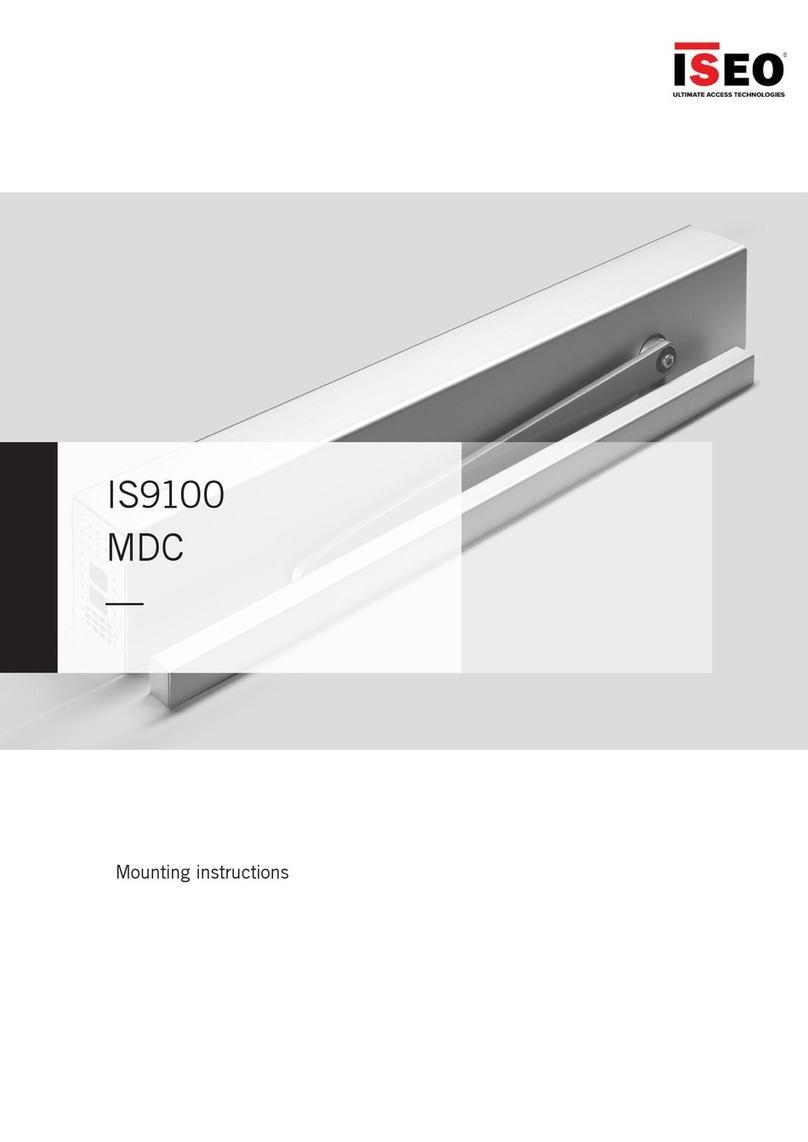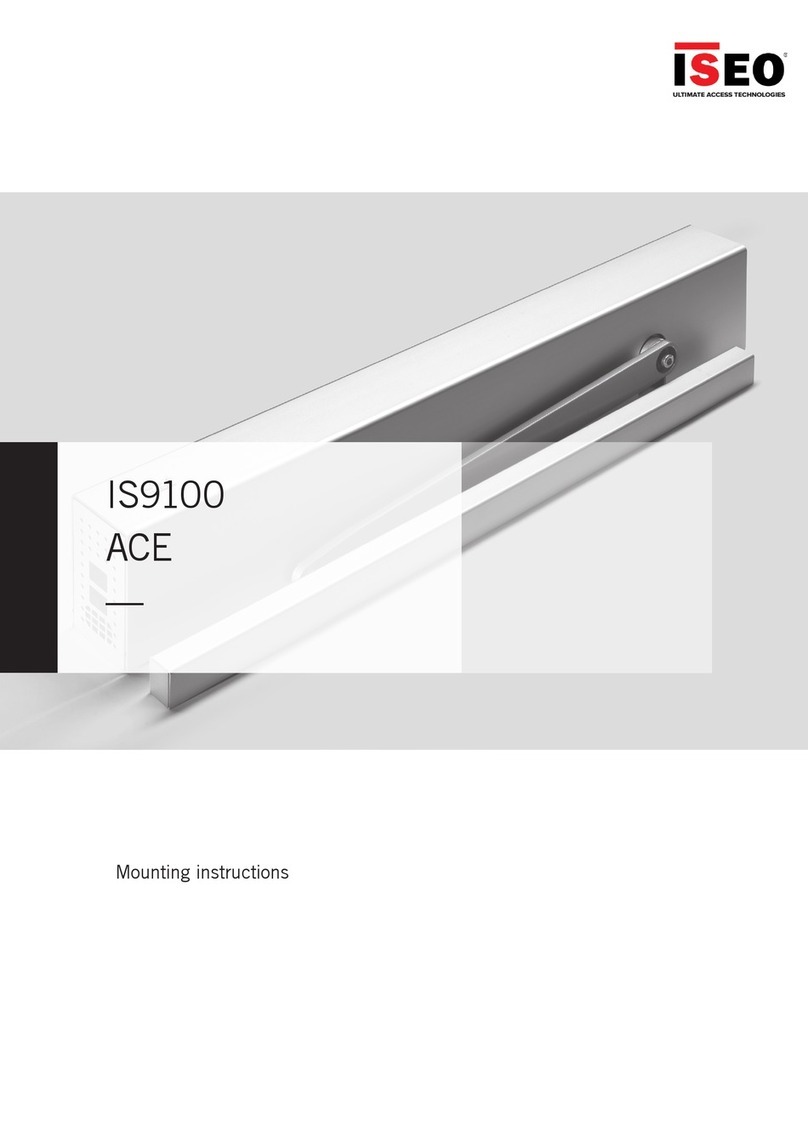
2.7 Safety Instructions
Work on electrical equipment must
be performed by qualified electricians only.
Never stick metal objects into the door system’s
openings. Otherwise there is a risk of electric shock.
Safety glass must be used for glass door leaves.
If installing the IS 9100 on a metallic door leaf, ground
the door leaf properly.
Never allow children to play with the IS 9100 or its
control and regulating devices.
Keep remote controls out of the reach of children.
The IS 9100 must be protected against water and
other liquids.
Only properly qualified persons may open the mains
connection unit.
Deenergize the IS 9100 before removing the protective
cover.
2.8 Dangers at Closing Edges
There may be crushing, shearing, collision and
drawing-in risks at the different closing edges of
automatic doors.
Opposing closing edge
Secondary closing edge
Main closing edge
2.9 Dangers due to the Slide Channel Lever and Arm
There are risks of crushing and shearing at the slide
channel lever and arm.
2.10 Residual Risk
Depending on the structural circumstances, door variant and
potential safeguards, residual risks (such as minor crushing,
impact with limited force and the risk to unsupervised
children) cannot be excluded.
The danger spot on the secondary closing edge of all swing
doors (including those which are manually operated) is
generally known to all door users. It cannot be influenced
by the drive manufacturer Its safeguard is often not feasible
from a constructive and functional standpoint.
Clamping protection (such as a rubber or textile cover) which
may be suitable for this can be obtained from specialist
dealers and is not included in the scope of delivery.
2.11 Briefing
Once the door system has been successfully set,
commissioned and functionally tested, the installation
and operating instructions must be handed over to the
facility drive. A briefing must take place on operating and
maintaining the door system.
2. Safety
This documentation contains important instructions for
installation and safe operation. Read these instructions
carefully before beginning the installation.
Follow all of the enclosed instructions to guarantee your
safety.
Incorrect installation may result in serious injuries.
The use of control elements, settings or procedures which
are not described in this documentation may cause electric
shock, danger due to electric voltages/currents and/or danger
due to mechanical processes.
2.1 Intended Use
IS 9100 is electromechanical swing door drive and is used
exclusively for opening and closing interior swing doors with
a door leaf weight of max. 160 kg.
Before installing the device on a smoke or fire door, check
that it is approved in conjunction with the door.
Before getting started with the installation, ensure that your
device is suitable for the respective door situation using the
comments in Chapter 4 and that the door is equipped with
hinges suitable for automatic mode.
The cable length for external components must not exceed
30 m.
2.2 Limitation of Liability
IS 9100 must only be used according to their intended use.
ISEO accepts no liability for damages resulting from
unauthorized changes made to the door system. No liability
is accepted for the use of accessories which have not been
approved by ISEO.
2.3 Risk Assessment by the Installer
The manufacturer, i.e. the person performing the
installation, and the contracting authority/facility drive must
jointly perform an individual risk assessment when planning
the system.
Due to particular spatial circumstances and the door user
groups to be expected, it may be sensible to use safety
sensors also in low-energy mode.
2.4 Particular Safeguard Requirement with Regard
to Vulnerable Persons
If the risk assessment indicates that the door leaf could hit
and therefore injure someone, additional sensors must be
attached to eliminate the danger.
This must particularly be taken into consideration if children,
older persons or disabled individuals use the door system,
too.
2.5 Standards, Laws, Guidelines and Regulations
The latest versions of the generally valid and country-
specific standards, laws, guidelines and regulations must be
observed.
2.6 Information/Regulations to be Observed when Using
IS 9100 on Fire and Smoke Doors:
• Data sheet on using hold-open systems
• Guidelines for hold-open systems issued by the DIBt
(German Institute for Civil Engineering), Berlin
IS 9100
—
3ISEO





























